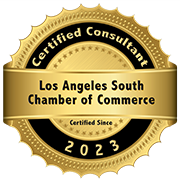You’ve got the vision, you know your goals—but if your marketing budget is off, even the best strategies will stall. Whether you’re launching a new business or scaling up, a smart, intentional budget is the foundation for growth that lasts. Here are 10 tips to help you build a marketing budget that doesn’t just look good on paper, but actually works.
1. Start with Strategy
Before you talk numbers, get clear on why you’re marketing. A strong marketing strategy should outline your business goals, ideal customers, and your overall marketing mix—what channels and tactics you’ll use to reach people at different stages. This mix is critical to delivering a great customer experience that drives results. If you’re not sure where to start, our post on improving your customer experience breaks it down step by step.
2. Know Your Customer Journey (and Who’s On It)
Not every dollar has to go to lead gen. Look at your full funnel—awareness, engagement, conversion, retention—and budget across the whole journey to support long-term growth. It all starts with knowing your customer. That means building a strong customer persona to identify your ideal client’s needs, habits, and behaviors. If you haven’t already, check out our blog on how to build a customer persona to make sure your dollars are targeting the right people.
3. Benchmark Based on Revenue (and Stage)
A typical marketing budget sits between 5–10% of gross revenue. But if you’re a startup or planning a major ramp-up, plan on allocating closer to 15–20%. That kind of investment can be the difference between slow traction and real momentum.
4. Focus on ROI, Not Just Spend
It’s easy to fixate on costs. Instead, shift your thinking toward returns. What are the channels or campaigns that consistently deliver leads, sales, or engagement? Double down on those.
5. Include Hidden Costs
Design, copywriting, tools, software, training, freelance help—these add up fast. Make sure your budget accounts for all the extras that fuel execution.
6. Set Channel-Specific Budgets
Break things down. How much are you putting toward paid ads, SEO, email, social media, or content creation? Clear allocations help you track performance and adjust faster.
7. Leave Room for Testing
Markets shift. Algorithms change. Consumer behavior evolves. Carve out 10–15% of your budget to test new platforms, creative approaches, or campaigns without derailing your core plan.
8. Don’t Forget Brand
Performance marketing is vital, but brand building is what creates staying power. Budget for identity work, storytelling, and long-term messaging that builds trust and recognition.
9. Measure, Learn, Repeat
Build in tools and processes to track KPIs. Whether it’s cost per acquisition, conversion rate, or lifetime value—know what success looks like and review it regularly.
10. Get Expert Help
Even the best founders can’t do it all. Bringing in strategic marketing support can help you avoid waste, spot opportunities, and align every dollar to business goals.
Ready to Build a Budget That Moves the Needle?
Your budget is a roadmap, not a spreadsheet. The right strategy makes sure you’re investing in the right places. Let’s talk about what that looks like for you. Book your free 30-minute consultation and let’s map out a plan that works—without the guesswork.

Ernesto Comodo
Marketing Director
Los Angeles South Chamber of Commerce (LASCC)
907K Marketing
Transforming small businesses into small giants through marketing strategy, branding and advertisement.


Recent Comments